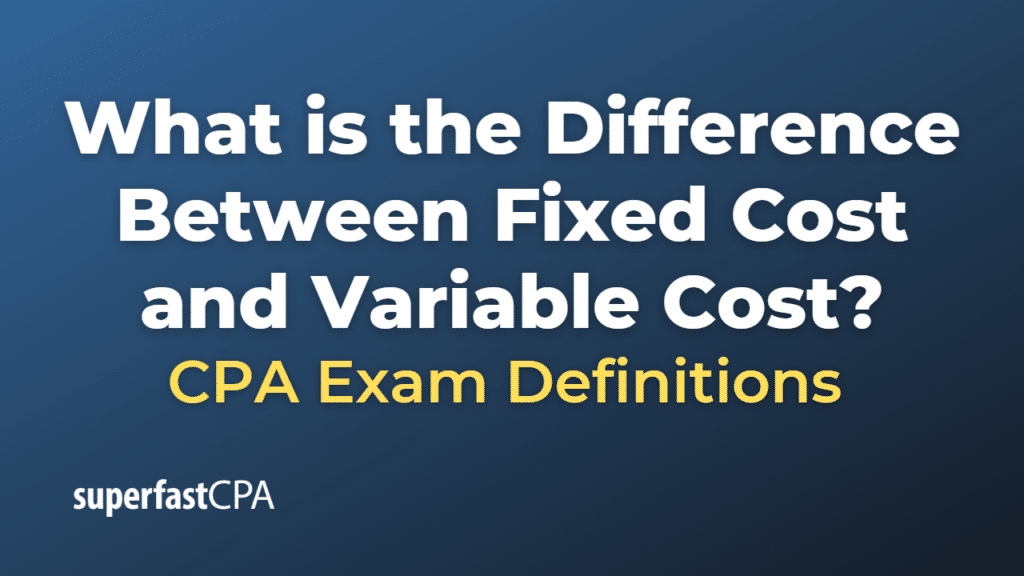Difference Between Fixed Cost and Variable Cost
Fixed costs and variable costs are two categories of business expenses that behave differently relative to the level of business activity or production volume.
Fixed Cost
Fixed costs are expenses that do not change in total over the short term, regardless of the level of output. These costs are incurred even if the business produces nothing at all. They are “fixed” in total but vary per unit of output when production levels change.
Examples of fixed costs include:
- Rent for facilities or equipment
- Salaries of permanent staff
- Insurance premiums
- Depreciation of equipment (using straight-line method)
Variable Cost
Variable costs are expenses that change in total proportionally with the level of business activity or production volume. They are constant per unit but vary in total when production levels change.
Examples of variable costs include:
- Direct materials
- Direct labor (if paid by the hour)
- Utilities related to production machinery
- Sales commissions based on units sold
Key Differences
- Behavior relative to output: Fixed costs remain the same in total regardless of output levels, while variable costs change in direct proportion to output levels.
- Per-unit cost: Fixed costs decrease on a per-unit basis as output increases (because the same total amount is spread over more units), while variable costs remain constant on a per-unit basis (because each additional unit incurs the same cost).
Understanding the difference between fixed and variable costs is crucial for various business decisions and financial analyses, including pricing, profitability analysis, budgeting, and break-even analysis.
Example of the Difference Between Fixed Cost and Variable Cost
Let’s consider a simple example using a T-shirt manufacturing business:
Fixed Costs
Let’s say the business rents a warehouse for production at a cost of $10,000 per month. This cost remains the same regardless of how many T-shirts are produced. It’s a fixed cost.
Additionally, the business has a full-time staff with monthly salaries totaling $20,000. Again, this cost does not change with the number of T-shirts produced.
So, the total fixed costs for this business are $30,000 per month ($10,000 for rent + $20,000 for salaries).
Variable Costs
Now, for each T-shirt produced, the company uses $2 worth of fabric and $1 worth of dye. The company also pays a printer $1 per T-shirt for printing designs. Therefore, the variable cost per T-shirt is $4 ($2 for fabric + $1 for dye + $1 for printing).
If the company produces 5,000 T-shirts in a month, the total variable cost for that month would be $20,000 ($4 per T-shirt * 5,000 T-shirts). If the company produces 10,000 T-shirts, the total variable cost would be $40,000.
In Conclusion
In this scenario, the company’s total costs would be a combination of its fixed costs and its variable costs. For example, if the company produces 5,000 T-shirts in a month, the total costs would be $50,000 ($30,000 in fixed costs + $20,000 in variable costs).
Understanding the distinction between these cost types is crucial, as it influences pricing strategies, profitability forecasts, and break-even analyses.













